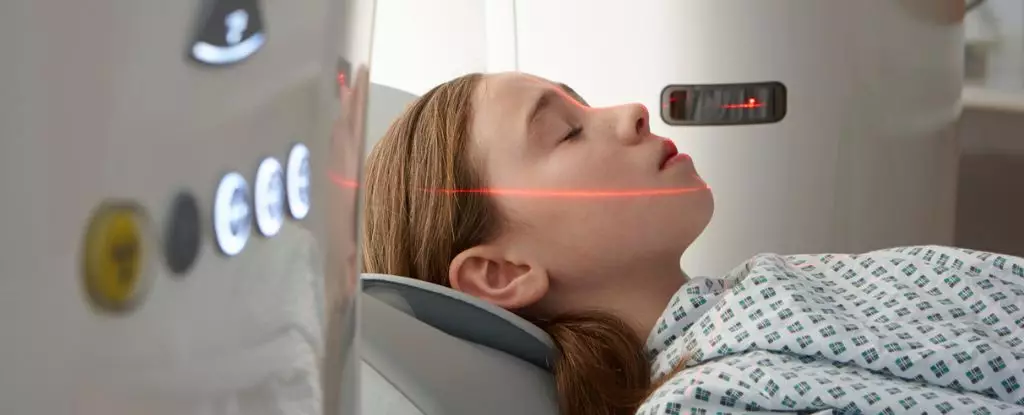As advancements in medical imaging technology continue to evolve, computed tomography (CT) scans have become indispensable tools in the diagnostic armory of healthcare providers across America. With over a 30% increase in the number of annual CT examinations since 2007, more patients than ever are benefiting from the rapid and precise diagnoses these scans can offer. However, this heightened reliance raises pressing questions about the associated risks, particularly the exposure to ionizing radiation and its potential linkage to cancer.
While the immediate click of the CT machine often brings reassurance and understanding of hidden health issues — from tumors to internal injuries — it is crucial for patients to weigh the benefits against the theoretical risks involved. Many in the medical community, including epidemiologists and radiologists, are voicing concerns that the scale of CT scans may expose individuals to unnecessary radiation, particularly when alternative imaging methods could serve the same clinical purposes without the radiation burden.
The Invisible Threat of Ionizing Radiation
The dialogue surrounding the relationship between low doses of ionizing radiation from CT scans and cancer risk is not a new one. While the probability of developing cancer from a single session is considered incredibly minimal, new research indicates that the volume of CT scans performed might cumulatively lead to significant long-term risks. For example, the prediction that 5% of new cancer cases in the United States could theoretically arise from CT scan exposure is deeply alarming.
Though drawing from the data of catastrophic events like the Hiroshima bombing and nuclear power plant meltdowns, which provide context for understanding radiation’s effects, it’s essential to acknowledge that direct comparisons to CT scan exposure remain contentious. The complex relationship between radiation dosage, type of imaging technique, and patient vulnerability means that blanket statements may oversimplify the reality for particular demographics.
Parsing Data and Underscoring Vulnerabilities
In a comprehensive analysis performed across 143 hospitals and outpatient facilities, researchers gathered data from the UCSF International CT Dose Registry, highlighting significant findings. Their projections estimate that approximately 93 million CT examinations would occur in 2023 alone, impacting around 62 million patients. Based on the interpretation of the data, a sobering estimate emerges: as many as 103,000 future cancer diagnoses could be attributable to these scans. When seen through the lens of potential prevention, this figure should provoke serious discussions among healthcare professionals and policymakers.
Children and adolescents are particularly emphasized in this discussion. Research indicates that younger individuals undergoing CT scans may carry a higher lifetime risk for certain cancers, including thyroid cancer. Vulnerable populations warrant cautious consideration and proactive measures in refining diagnostic practices to ensure that they are subjected only to necessary imaging. Treatments and diagnostic tools that involve little to no radiation should be explored further as viable alternatives whenever possible.
Striking a Balance: Vigilance Without Fear
The tension between acknowledging potential risks and continuing to benefit from CT imaging represents a critical balancing act in modern medicine. While it is essential that practitioners remain vigilant about radiation exposure, it is equally important not to instill unnecessary fear in patients who require such diagnostic tools. Understanding that the advantages of timely diagnosis often outweigh the theoretical risks is crucial, and hence, a well-informed patient is better equipped to comprehend their healthcare decisions.
Medical professionals involved in radiation safety, like Pradip Deb of RMIT University, advocate for responsible practices surrounding CT scans. Emphasizing prudence in ordering unnecessary scans aligns with a broader ethical mandate to do no harm. At the same time, radiographer Naomi Gibson, President of the Australian Society of Medical Imaging and Radiation Therapy, underscores that the use of CT imaging should not diminish when justified, highlighting the essential role these scans play in enhancing patient outcomes.
As the march of technology accelerates and CT scans become ubiquitous in healthcare, addressing the layers of risk versus benefit will remain a tough but necessary conversation. Understanding the dynamics of how radiation exposure correlates with cancer development is essential as it informs public health policy, drives scientific inquiry, and ultimately guides healthcare practice in the interest of patient safety and well-being.


Leave a Reply